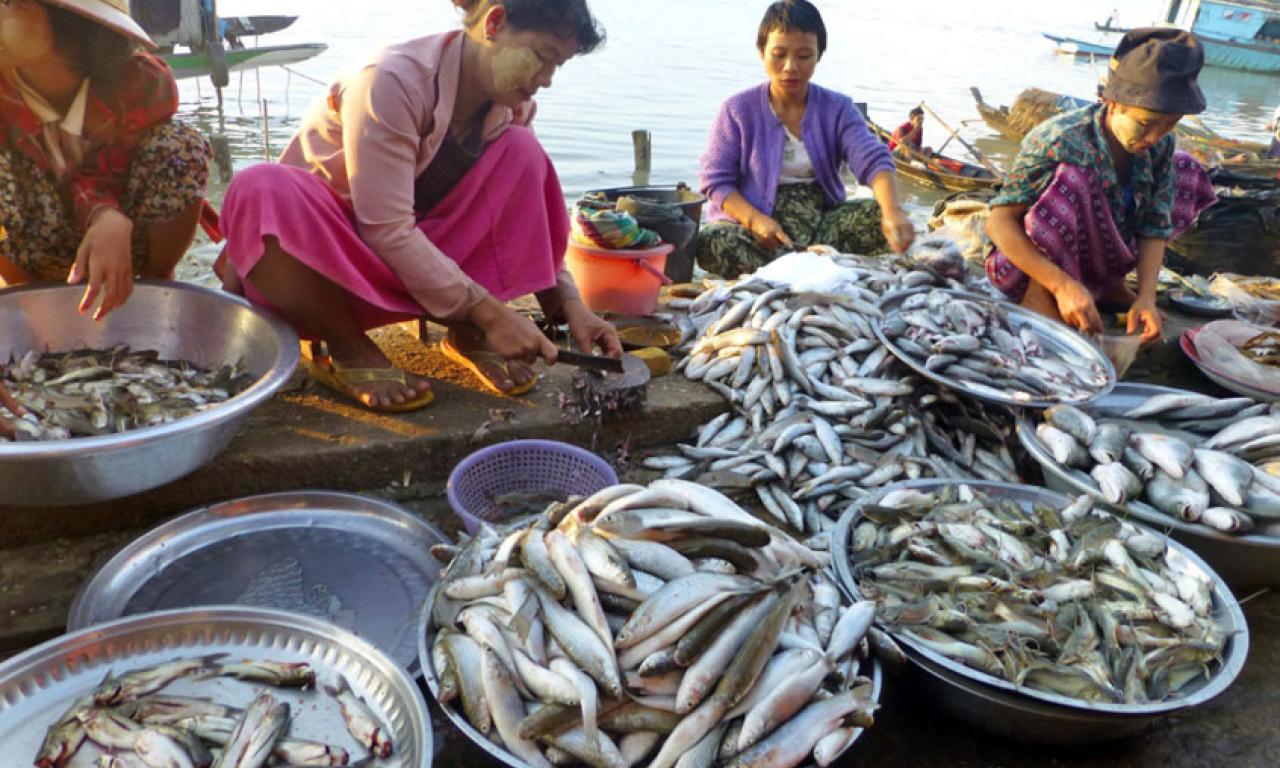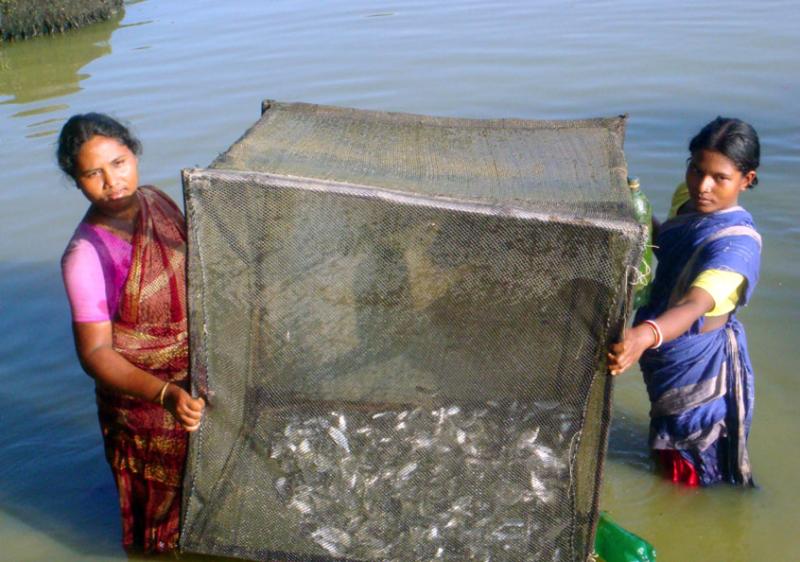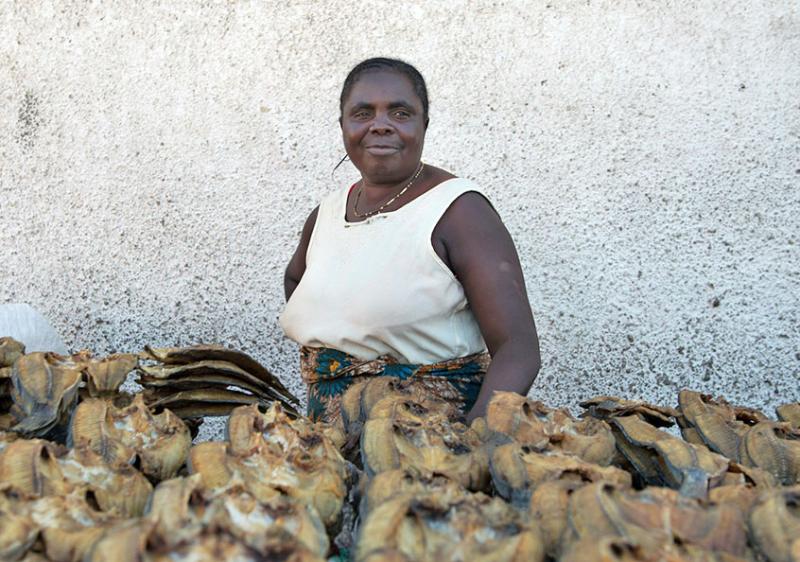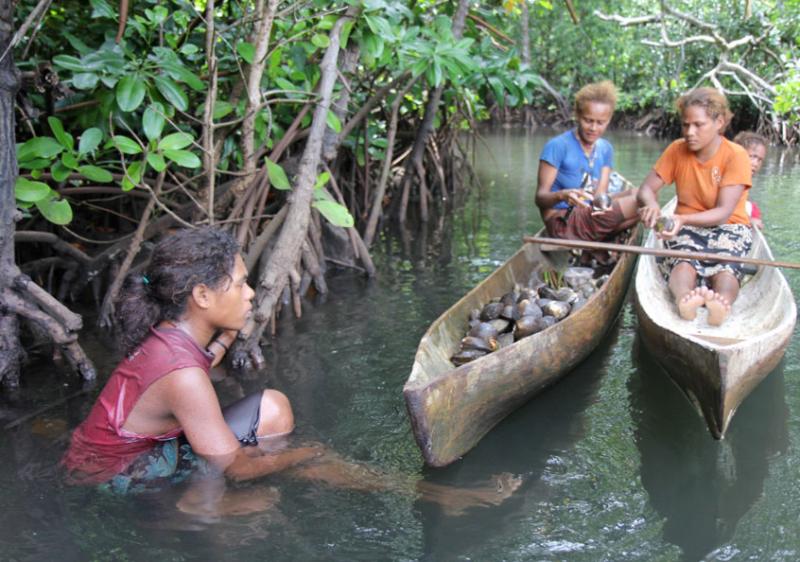
In 2018, people around the globe are rallying around the International Women’s Day themes of ‘Pressing for Progress’ and ‘The time is now: Rural and urban activists transforming women’s lives’. But what do these calls mean for and in fisheries and aquaculture?
Recommended publications
- Gender and aquaculture value chains: A review of key issues and implications for research
- Promoting gender equity and equality through the small-scale fisheries guidelines: Experiences from multiple case studies
- Gender in Myanmar's small-scale aquaculture sector
In 2018, people around the globe are rallying around the International Women's Day themes of ‘Pressing for Progress’ and ‘The time is now: Rural and urban activists transforming women’s lives’. But what do these calls mean for and in fisheries and aquaculture? Pressing for what? And transforming what and why?
This post reflects on two answers to these questions. The first is about pressing to address gender data gaps to enhance the effectiveness of policy and practice. The second is about transformation as distinct from participation. In other words, it is about recognizing this as a call to ‘level the playing field’ in fisheries and aquaculture, rather than an invitation for women to ‘join the game’.
Press here: Addressing gender data gaps
The evidence is resounding that gender-inclusive approaches and gender equality is good for economic outcomes. The International Finance Corporation of the World Bank, for example, concludes that ‘gender-smart solutions can deliver benefits ranging from a better talent pipeline to a positive investment climate that creates markets for all ... closing gaps between men and women in the private sector leads to business benefits and better development outcomes alike.’
Yet inclusive and equality-promoting growth in any sector, including fisheries and aquaculture, requires reliable data that is—at a minimum—sex-disaggregated. At present, this is missing or limited.
That is why one key area in pressing for progress in 2018 is closing gender data gaps. This means at least committing to collecting sex-disaggregated data. Moreover, it means gathering and analyzing information about both men’s and women’s aspirations, experiences, needs, risks, barriers (including gender dynamics) and opportunities. This includes generating insights into if, when and in what conditions these are the same or different, and why and what the implications are for equitable and effective policy and practice.

Transforming what? Moving beyond participation
In recent years, policy and practice in the sector have sought to reach women and enable their participation in fisheries and aquaculture. This is evident from global initiatives such as the Voluntary Guidelines for Securing Sustainable Small-Scale Fisheries through to local interventions engaging women in homestead fish production, technical training programs or savings group opportunities. Yet while this focus on women’s involvement and participation is a necessary part of progressing towards an inclusive sector and thus the sector’s ability to contribute to the SDGs, it is not sufficient.
One reason that we need to move beyond participation is that while women now make up approximately 50 percent of the workforce in the sector, their involvement tends to be in unpaid or lower paid work. This reflects gendered forces such as division of labor or access to and control over assets. Recent case studies conducted by WorldFish and FAO in Indonesia and Bangladesh highlighted that while women in Indonesia were able to engage in shrimp farming as casual labor, exceptionally few women in the case areas were able to move into the higher return role of shrimp operator. Similarly, while both women and men work in shrimp-processing factories in Bangladesh, women in the cases had little hope of moving out of lower-paid manual labor into higher paid supervisory roles, no matter their education, because of gender norms and stereotypes.
Additionally, transformation (not only participation) is critical because gendered barriers shape outcomes for women in fisheries and aquaculture and thus for their families. For example, in the Indonesian cases, even when women ran their own small businesses in fish processing, their (male) spouses maintained final decision-making power including over the businesses. Women’s ability to grow the skills and networks needed to succeed were similarly limited by the imbalances in decision-making power and gender norms framing women as the family caregivers. Some women experienced negative outcomes such as increased work burdens or social criticism when they took on nontraditional roles. Pressing for participation, when the opportunities for and outcomes of participation are constrained by gender barriers, is thus only part of how we will get to a gender-inclusive and equal future.

What does this mean for fisheries and aquaculture?
While recognizing the importance of continued efforts to involve and include women, the above points to transformation being needed in fisheries and aquaculture at two levels. On the surface, the sector requires transformation in value chains so that women and men have equal opportunities for safe, dignified, meaningful entrepreneurship and employment with fair and higher value returns. Digging deeper, creating gender equality in the sector will rely on transformation in underlying gender barriers, including stereotypes and practices.
Approaches that engage men and women together in this kind of transformative change are now being developed and tested. For example, fisheries actors in the Solomon Islands have started to identify what kinds of questions practitioners need to ask when embarking on a gender-transformative approach in that context. In Zambia and Bangladesh, WorldFish and partners have been making progress identifying and testing multiple ways forward, including facilitated critical reflection processes engaging men and women together. A recent WorldFish research project, funded by IDRC and ACIAR and implemented by the Zambian Department of Fisheries, the Zambia Center for Communication Programmes and other partners, found that such an explicitly gender-transformative approach leveraged greater change than a gender-accommodative approach in terms of shifts towards gender-equal attitudes, transitions from male ownership to joint ownership of fishing-related assets, and increases in women’s decision-making power over income.

Answering the call for equality this International Women's Day
While reaching and involving women is an important foundation, this year’s call for progress and transformation on International Women's Day means more than participation.
WorldFish is taking up the call. In 2018, together with our partners and through the CGIAR Research Program on Fish Agri-Food Systems (FISH), we will be closing gender data gaps through our research and monitoring and evaluation in fisheries and aquaculture in Africa and Asia. Moreover, as well as designing our research to be explicitly gender-inclusive and responsive, we will continue to develop and test strategies for enabling context-appropriate and locally-led, sustainable gender transformation. In this way, our research will not only be better inviting women into fisheries and aquaculture, it will also be helping to level the playing field in the sector.
As these video interviews with fisheries-dependent women and men from Zambia highlight, moving the sector towards gender equality can lead to better outcomes for everyone. And that’s worth celebrating.
